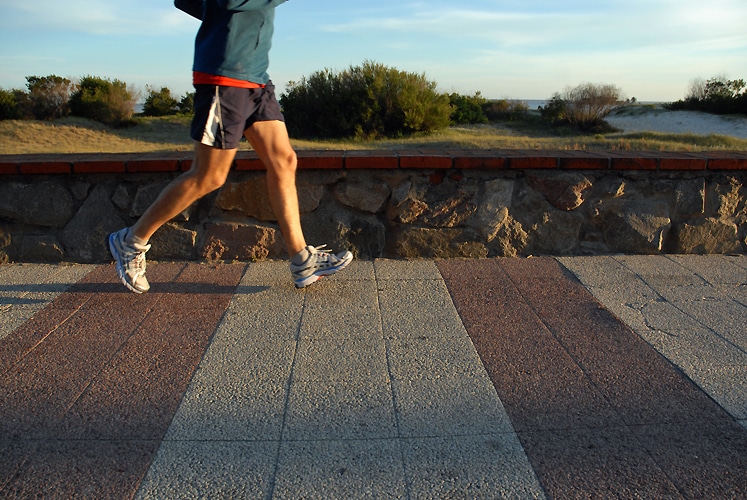Exercise may be the furthest thing from your mind after a cancer diagnosis. Even if you have never been active, exercise can become one of your favorite activities. Ask your doctor before you start to exercise because each person is unique and heals differently. With more medical professionals recommending exercise to their patients, it is imperative for cancer survivors to learn how to exercise safely. A good exercise program will help to reduce the side effects of surgery and treatments. These side effects can include fatigue, neuropathy, decreased range of motion, weakness, lymphedema, and a significant emotional toll. Once you start to exercise and have less pain, stiffness and more energy, you will be motivated to continue.
Exercise may reduce the chance of recurrence, and it is therefore more important than ever to add exercise to your recovery plan. For those who have been active prior to their diagnosis, this is great news. A good exercise program will help you to get back to the activities that you enjoy. For the cancer survivors who have been inactive, it is never too late to start an exercise program. Work with an experienced cancer exercise specialist in your area or purchase cancer exercise books and DVD’s. This will give you the tools that you need to get started in an exercise program that is part of a healthy lifestyle.
Before You Begin
You will need to speak to your health professional before beginning an exercise program. Your particular surgery, treatments, fitness level and healing speed will guide the progression of the exercises. Your health and recovery process is always changing and it will be important to regularly monitor your blood count, muscle and joint pain, nausea, and fatigue. You may also have lingering impairments or health concerns that need to be evaluated by a physical therapist or lymphedema therapist.
You should meet with your oncologist to review the exact nature of your treatments so that you will understand the potential side effects of your treatments. This way you will be able to understand your exercise plan in relation to your unique situation. Some medications affect balance, and cardiac function, or increase the risk of dehydration. It is crucial that you understand the health issues you may encounter as a consequence of your surgery or treatment. This will include learning which muscles are affected, which lymph nodes are removed, and the cardiac and pulmonary effects of radiation and chemotherapy.
Exercise Goals
Goals should be specific and realistic. You may want to lose weight and increase your muscle mass. If flexibility is an issue, your goal may be to improve your range of motion. Other goals might be to become stronger, have a good quality of life, better mood, or to decrease the chance of recurrence.
It is helpful to have both short term and long term exercise goals. Goals should be able to be adapted to changes in work, health, and family situations. If you are new to exercise, select an activity and set an achievable goal. Slowly add exercise to your daily activities and find something that works with your lifestyle.
Remember: Think positive and have fun!
Exercising During Chemotherapy and Radiation
It seems counterintuitive, but exercise during treatment is shown to be helpful. Physical activity during treatment can reduce common side effects such as fatigue, pain, nausea, depression or anxiety. If you are suffering from pain and nausea you should have those issues under control before beginning. Your doctor will be able to tell you how often you should exercise and how intense your program should be.
Each treatment is unique and has potentially debilitating side effects of which you should be aware.
Systemic treatments such as chemotherapy and hormonal therapy as well as targeted, biological and immunotherapies may impact your balance, cardiac function, and gastro-intestinal tract. Furthermore, they may lead to neuropathy or numbness in your extremities. Radiation can cause fatigue and increases the risk of lymphedema. It can also cause swelling and burning of the skin.
First Steps
Try to start moving as soon as possible after surgery, even if it is only walking indoors. This will help you to regain strength. If you had been inactive prior to surgery, start with short walks and increase the distance walked each time. You can also increase the frequency of the walks as you slowly increase the distance. Try to find a walking buddy and walk often. Build up strength slowly and make sure never to over do it. Just 15 minutes a day can improve your energy level and mood.
Incorporate aerobic activity into your fitness plan. Find the aerobic activity – one that increases your heart and breathing rate – that you enjoy and try to do it daily. Aerobic activity is an important component of a fitness plan and includes activities like walking, hiking, and dancing.
![]() Carol Michaels is a cancer exercise specialist and creator of the Recovery Fitness cancer exercise program. Recovery Fitness is taking place at Morristown Medical Center and several other facilities in New Jersey. Michaels also wrote “Exercise for Cancer Survivors,” a resource for cancer patients going through surgery and treatment.
Carol Michaels is a cancer exercise specialist and creator of the Recovery Fitness cancer exercise program. Recovery Fitness is taking place at Morristown Medical Center and several other facilities in New Jersey. Michaels also wrote “Exercise for Cancer Survivors,” a resource for cancer patients going through surgery and treatment.






